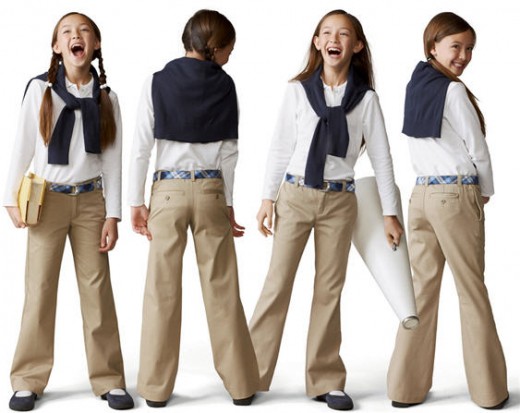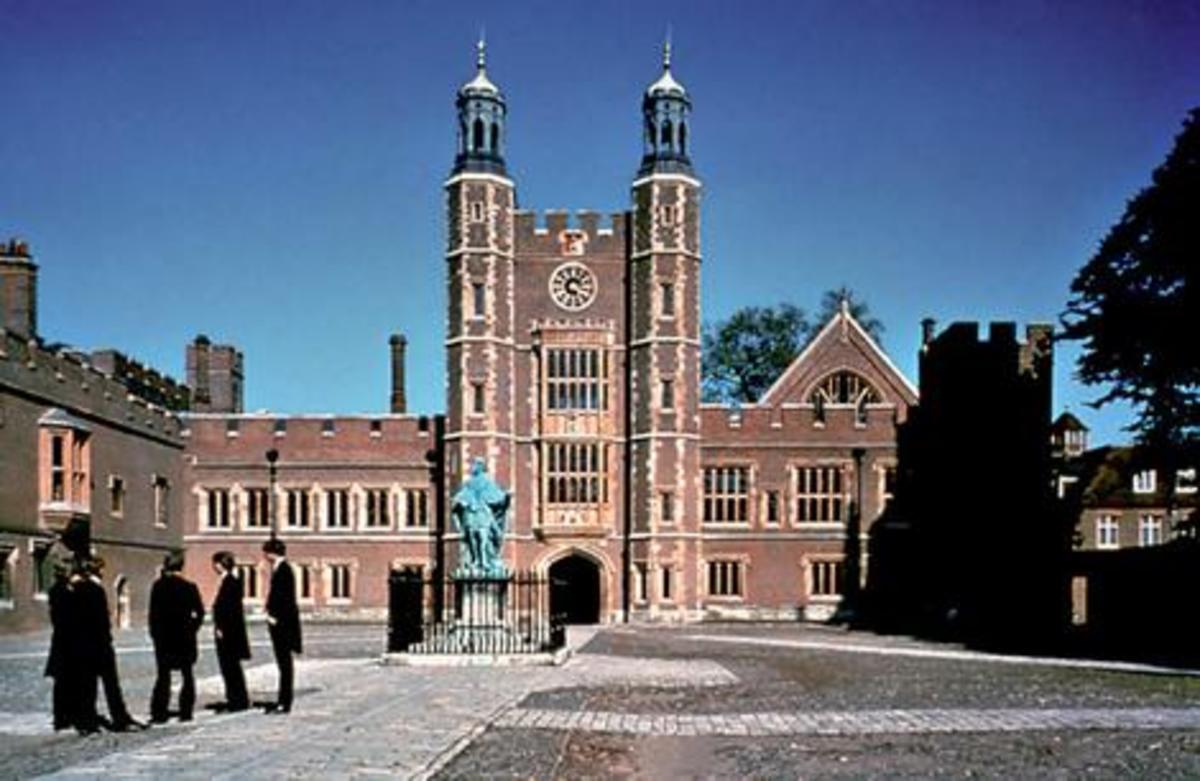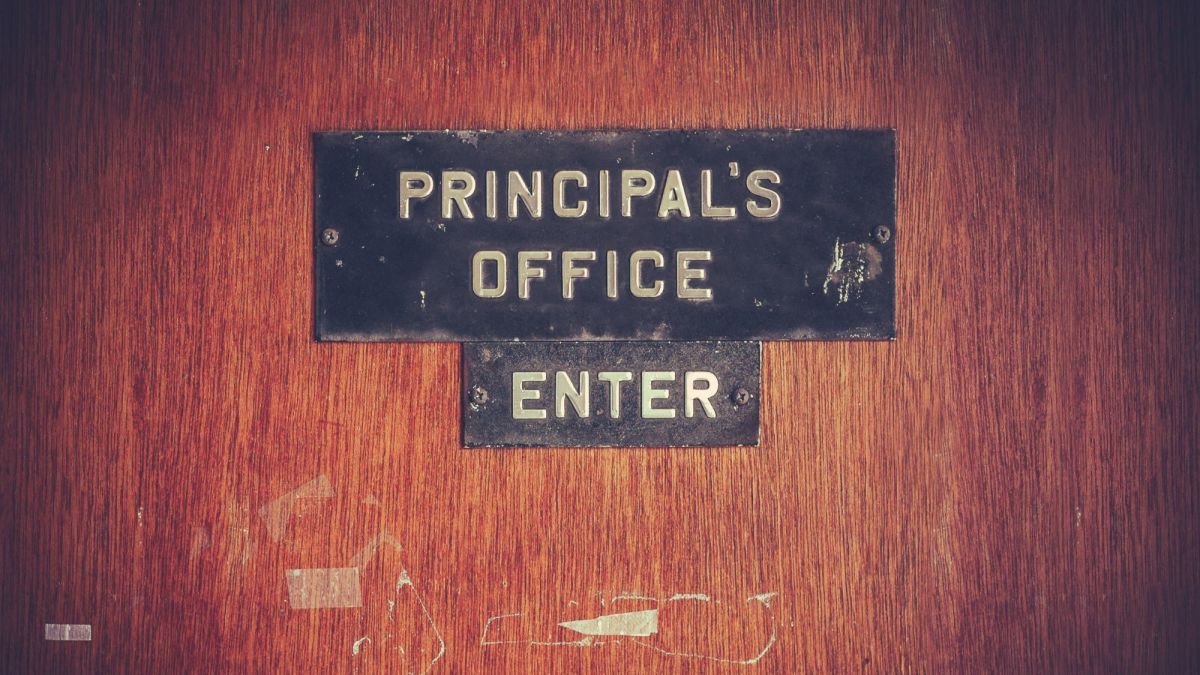School Uniforms: Part of A Solution

School Uniforms: Part of A Solution
Attending school has been a hardship for some students and a breeze for others, but one thing that either student has in common is school uniforms. Baltimore's Cherry Hill Elementary School in 1986, “became the first U.S. public school to adopt a school uniform policy” (Konheim-Kalkstein, 2006, pp. 24-27). The introduction of school uniforms into the school systems was an ingenious idea. Schools are again becoming a safe haven and an educational institution for which it was meant, and not a social classification, gang related, or violent arena that it was becoming.
Typically, when students go to school they are there to learn, however during lunch and maybe recess – study hall for older classes, students have down time and socialize with their peers. School uniforms have helped with that socialization because it alleviates the social structure of who’s who. Richard Murray in 1997, wrote in NASSP Bulletin (as cited by Konheim-Kalkstein, 2006), “… the results of a survey of 306 middle school students in Charleston, S.C. Murray found that students in a middle school with a uniform policy had a significantly better perception of their school's climate than did students in a school without a uniform policy” (pp. 24-27). A parent has to feel more at ease knowing that their child can attend school and get an education without being harassed about the clothing they wear, or not fitting in because their sense of style is not like the other students.
Moreover, a researcher from the University of Minnesota, Winston Tucker, in 1999 examined the perceptions of St. Paul teachers. According to Winston Tucker (as cited in konheim-kalkstein, 2006), “He found that in schools where uniforms were worn, teachers perceived more positive behavior and peer interactions. They also reported fewer cliques, less teasing, and better self-esteem” (pp. 24-27). This just goes to show, without the stress of who’s who because of clothing, students are more able to view each other as individuals. Their attitudes have changed from the negative stigma that clings to those who can’t afford the Versace, or Abercrombie outfits, to the positive by seeing a person for whom they are. Taking away the fads of fashion has had a great impact on our children as well as relieving anxiety from parents.
Subsequently, getting the social classification under control leaves us with how school uniforms have impacted gang related activity. The establishment of school uniforms stopped students from wearing gang related colors or gang related emblems. For example:
A 1999 Education World article by Glori Chaika reported a significant drop in gang violence in Chicago schools that adopted school uniforms. Similarly, in a 2003 Education and Urban Society article, Kathleen Wade and Mary Stafford reported that teachers at schools with uniforms perceived lower levels of gang presence than teachers at schools with no uniforms. This difference was significant, despite the fact that the uniform schools were in areas with slightly higher numbers of gang-related crimes (Konheim-Kalkstein, 2006, pp. 24-27).
Implementing and enforcing school uniform policy has changed the way students view other students. They now may gripe about having to wear the stupid uniforms to one another as opposed to complaining or harassing one another about what they are wearing. The violence has decreased because students don’t feel superior or inferior to one another. They have been put on the same playing ground. They have been united where they once were divided.

Do you think all schools should adopt school uniform policies?
Furthermore, school uniforms helps to reduce the cost of clothing for parents. As a parent, there are only benefits to having school uniform policies. This policy helps to decrease gang activity and violence, relieves stress from students and parents alike, and reduces financial strain. There are some that would say that school uniform policy infringes on the rights of that student. They say that it is a violation of the First Amendment – Freedom of expression and speech. School uniforms are not intended to inhibit anyone’s right of the First Amendment. Just because students wear uniforms doesn’t mean they can’t express themselves, they still have a voice to be heard and nobody is trying to stop that voice, furthermore there are many other ways of self-expression. The two boys at Columbine expressed themselves by killing. If there had been a uniform policy the event may not have taken place because they wouldn’t have been harassed about their clothing. Amy Ridabock, who teaches fifth- and sixth-graders said (as cited by Learn & Holley, 2007), “The uniforms have eliminated a big distraction for students at an easily distracted age. If they're all wearing pretty much the same thing, they don't need to pay attention to it” (para. 17). This is just a way to help them develop without being inhibited by their own peers. There was a time it was peer against peer now it is peer to peer.
In essence, school uniforms promote harmony and a less hostile environment for students. Less violence, no gang related colors which decrease gang related activity, and the social grouping is almost nil because the who’s who can’t demonstrate their dominance or social status by just merely their clothes. Fifth-grader Angelina Minor says it best, (as cited by Learn & Holley, 2007), “uniforms keep kids who can't afford nice clothes from being teased. …My parents said, 'You go to school to learn, not to dress up'" (para. 24-25). If all parents take this stance then they would help to remove undue stress from their students and also themselves.
Here is some food for thought! Learning should be the first and foremost issue, and for learning to commence, the gang related activities and violence, and social cataloging has to stop. School uniforms are a small step in the right direction. It is not the whole solution but a part of the solution and not an infringement on a student’s First Amendment. What is it if you have freedom of speech but you never learn to speak?
References for Citations
Bibliography
Konheim-Kalkstein, Y. L. (2006). A uniform look. American School Board Journal. 193( 8)
Learn, S. and Holley G. (2007). Adults give school uniforms high marks. Oregonian: Portland, OR.








